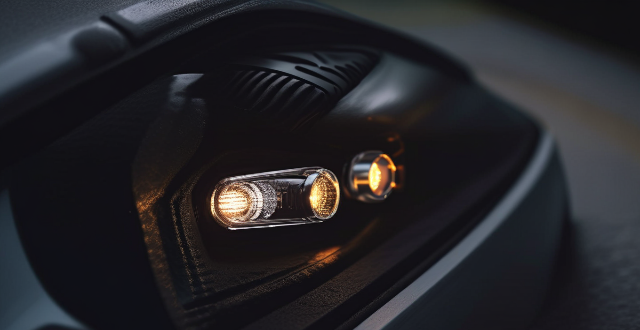The car's headlight system is a crucial component for safe driving, especially at night or in low-light conditions. It is powered by the car's battery and alternator, with the headlight switch completing the circuit between the power source and the headlights. The bulb or LED produces light, which is then directed and distributed by the reflector and lens. The beam adjustment allows for changes between high and low beams, while sensors and controls automatically adjust the headlights based on various factors. Overall, the headlight system is designed to provide optimal illumination and visibility while ensuring safety for all drivers on the road.

How Does a Car's Headlight System Work?
Car headlights are essential for safe driving, especially at night or in low-light conditions. They not only illuminate the road ahead but also make your vehicle visible to other drivers. Here's a detailed explanation of how a car's headlight system works:
1. Power Source
The headlight system is powered by the car's battery and alternator. When you turn on the headlights, electricity flows from the battery to the headlight bulbs or LEDs.
- Battery: Provides initial power when you start the car.
- Alternator: Recharges the battery and powers the electrical systems while the engine is running.
2. Headlight Switch
The headlight switch is usually located on the dashboard or steering column. When you turn it on, it completes the circuit between the power source and the headlights.
3. Bulb or LED
Traditionally, car headlights used halogen bulbs. Modern cars often use LEDs (Light Emitting Diodes) due to their energy efficiency and longer lifespan.
- Halogen Bulbs: Produce light through a tungsten filament that glows when electricity passes through it.
- LEDs: Produce light through semiconductor materials that emit photons when current flows through them.
4. Reflector
The reflector is a curved surface behind the bulb or LED. Its purpose is to direct light forward and sideways, improving visibility and reducing glare for other drivers.
5. Lens
The lens covers the front of the headlight assembly. It focuses and distributes the light, ensuring that it meets legal requirements for brightness and beam pattern.
6. Beam Adjustment
Many cars have an adjustable knob or lever to change between high and low beams.
- Low Beam: Illuminates the road ahead without blinding oncoming drivers.
- High Beam: Provides greater illumination at the expense of potentially blinding other drivers.
7. Sensors and Controls
Modern cars may include sensors and controls that automatically adjust the headlights based on various factors:
- Automatic Headlight Control: Turns on the headlights when ambient light is low.
- Daytime Running Lights (DRL): Turns on certain lights during the day to make the car more visible.
- Adaptive Front-lighting System (AFS): Adjusts the headlight angle based on steering input and vehicle speed.
- Automatic High Beams: Switches between high and low beams based on the presence of other vehicles.
In conclusion, a car's headlight system is a complex network of electrical components designed to provide optimal illumination and visibility while ensuring safety for all drivers on the road. As technology advances, we can expect even more sophisticated systems that enhance both functionality and aesthetics.